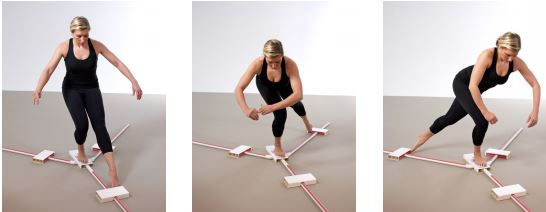Y Balance Test- What is it and what can it tell us?
- Andrew Kinach
- Jul 7, 2023
- 2 min read
The Y Balance Test, or YBT for short, is a simple test to see how well you can stand on one leg while reaching with the other leg to three locations, in front, out to the left side around 45 degrees, and out to the right about 45 degrees.

The furthest point you can get your toe on the line without losing your balance is measured and compared to the other side. Now, what is the point of doing the test? What can it tell us in order to help athletes and active individuals? The YBT is a great predictor of non-contact lower extremity injuries throughout a season (1). That means it can help us identify if someone is more likely to get an ankle, knee, or hip injury while walking or running. If there is more than a 4cm (1.6 in) difference from the right side to the left, then the athlete has a greater chance of getting injured throughout their season (1).
The YBT can also be a predictor of hip abduction strength (1). Hip abduction strength in the standing leg is used to stabilize the pelvis by resisting the force of gravity on the reaching leg (1). This is important because it keeps the athlete from crashing into the midline, keeping valgus stress off the knee and reducing injuries, like non-contact ACL tears (1). If you perform this test and get more than a 4cm difference from side to side, we know we have some corrective exercise work to do in order to reduce injury risk!
1. Wilson, Benjamin R., et al. "The relationship between hip strength and the Y balance test." Journal of sport rehabilitation 27.5 (2018): 445-450.




Comentários